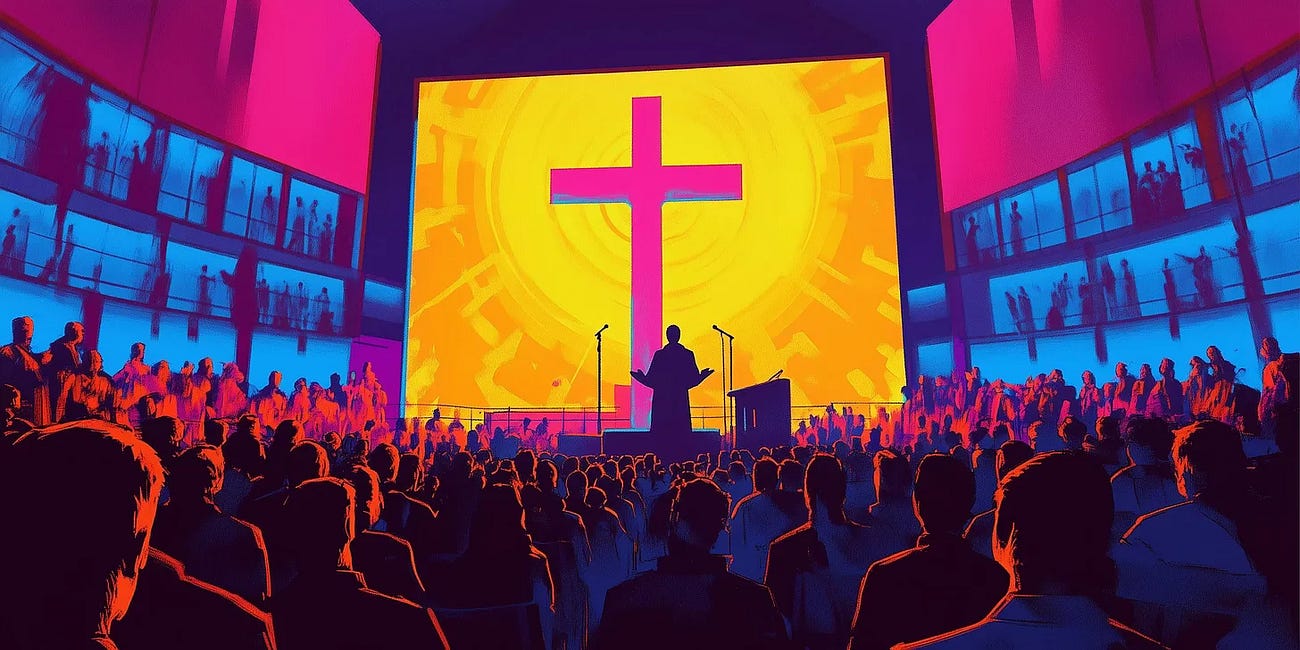The Pixels of Reality
We learn how the pixels of reality work, then review a new scientific-paper that measures how much data it would take to simulate all the matter in the universe. 💽
Fair warning: Quantum mechanics isn’t fun to learn. It’s gonna make your brain hurt. If you’re good believing that reality works like a first person video game, feel free to skip to the next story,
Beyond the Age of Reason
The Enlightenment needs some enlightenment. Here is scientific evidence for aliens, giants, telepathy, advanced prehistoric civilizations, clairvoyance, anti-gravity, and the afterlife. 🛸🔮👻
The Minimum Distance in the Universe
To completely honor Rene Descartes’ Scientific Method, we need to break our uncertainty down into the smallest possible units. So that means we need to understand what happens inside a quantum voxel of reality. If you skipped the last story, a Voxel is just like a pixel, except it’s a cube instead of a square.
Let’s start with this video from science blogger Arvin Ash, who explains the Standard Model of Quantum Field Theory. Don’t be intimidated by the scary formula, Arvin Ash makes everything really easy to understand. (16 mins)
Also, here’s a 90-minute lecture from Neil Turok called, “The Astonishing Simplicity of Everything”. (100 mins)
I have watched Neil Turok’s lecture several times because he makes the entire universe so incredibly easy to understand. Turok does a masterful job explaining the imaginary number ‘i’, which has a sinusoidal wave influence on the formulas in quantum field theory. Ironically, we have to use a number we know for sure isn’t real, to explain everything we know, for sure, is real. If there is a real God who influences our universe through imaginary numbers, that is cosmically hilarious.
The discrete voxels of reality that render everything in our universe are the size of a Planck Length, named for German physicist Max Planck. The Planck length is the official “minimum distance in the universe” based on the properties of Light and Gravity.
The Planck length is 1.6x10-35 meters small, which isn’t very relatable to anyone. So here’s a very simple way to imagine how small that is. Look at your arm and try to imagine just how small one of your skin cells is. It’s much smaller than the diameter of a single arm hair. Now imagine the size of that little skin cell compared to the entire observable universe. Imagine the galaxies past the galaxies you can see. It’s difficult to imagine just how small that skin cell is in comparison, right?
Well, your skin cell is 10-5 meters small and the universe is 1026 meters across. Now, let’s pull out all three of those exponents so they are easier for us to compare:
-35 (Planck length)
-5 (human cell)
26 (entire observable universe)
What do you notice? A skin cell compared to the entire universe is exactly how small the voxels of reality are, compared to that same skin cell.
There are 30 orders of magnitude either way, so “human scale” sits perfectly in the middle of the largest and smallest things in the universe. We are unable to see past the boundaries of our existence either way. We live in a “vice of uncertainty”.
Maybe that’s by chance, but the symmetry looks an awful lot like a design. 🤷
Fields of Fields
Quantum Field Theory is an informational theory so it’s important to understand the Field. Here’s a quote from Wiki,
In physics, a field is a physical quantity, represented by a scalar, vector, or tensor, that has a value for each point in space and time. For example, on a weather map, the surface temperature is described by assigning a number to each point on the map; the temperature can be considered at a certain point in time or over some interval of time, to study the dynamics of temperature change. A surface wind map, assigning an arrow to each point on a map that describes the wind speed and direction at that point, is an example of a vector field, i.e. a 1-dimensional (rank-1) tensor field.
@cybernerds: The easiest metaphor for me to understand what happens within a quantum voxel of reality is the Tensor in digital neural networks. Superposition is some sort of multidimensional math of all possibilities that only gets calculated when rendering for an observer. If spacetime is made up of discrete quantum-tensors, then “Mother Nature” might be a quantum neural network. 🌍👀
The easiest metaphor for me to explain what happens within a quantum voxel of reality is the spreadsheet. A field is like a spreadsheet with information for each tiny individual point in space that updates its information over time. The 17 fields that make up reality all intersect and interact at each point in spacetime to produce the “voxels of reality”.
That’s how we get “it from bit”.
Fields have “groups” and “rings” that perform mathematical calculations, which work kind of like subtotals for various rows and columns. I wish I knew a dumber way to explain this to myself. Each cell has calculations going on inside it that are affected by the calculations in the adjacent voxels. So when a photon of light gets shot across spacetime, the light acts as a “wave of analog calculation” rippling across the spreadsheets at a fixed rate. These calculations ebb and flow among adjacent cells like the ripples on a pond until they come to equilibrium.
@biblenerds: In Genesis 1:6, God separates the waters above the expanse of the universe from the waters below. Well, the only “subliminal water” I know is the quantum-wave function. If there is a God, then he invented what we call quantum mechanics, right?
Auto-Calculating Information
The quantum information that is auto-calculating within each voxel of reality is called Energy.
The concept of energy was first mentioned by Aristotle in the 4th century BC. Two thousand years later, Gottfried Leibniz proposed the idea of vis viva, which is Latin for “living force”. Leibniz believed total vis viva was conserved and could be calculated by the product of an object’s Mass times its Velocity squared:
E = MV2
That’s not a bad guess for 200 years before Einstein. Leibniz was only off by the speed of light. Later, a British mathematician who was instrumental in deciphering Egyptian Hieroglyphs was the first to use the word energy to replace vis viva. Energy comes from the Greek word meaning “activity” or “operation”. A few decades later Lord Kelvin defined the Laws of Thermodynamics which cemented the word energy into science forever.
@philosophers: If energy is simply the quantum calculations of a “Quantum Mechanical Server”, then it drastically alters what I consider possible in our universe. Whatever is possible in our kids’ video games, should be equally possible in our world too. In fact, we should ASSERT that the “god mode” of any simulation can’t be more advanced than the “god mode” of the parent simulation that produced it.
Walk on water?
Throw mountains into the sea?
Spawn fantastical creatures?
Fly through the air like Superman?
Those are just player permissions.
The reason the Netflix show, Black Mirror, is so trippy is their use of computer simulations. If you live in a simulation, you can’t even prove that yesterday existed. It probably did, but you can’t prove that everyone on Earth didn’t begin “this version of the simulation” in the exact quantum configuration from 10-minutes ago.
How do you know that all your memories before today weren’t downloaded into your neural network before you “booted up” this morning?
For some crazy examples of people living in computer simulations, check out this blogpost, 16 Essential Black Mirror Episodes for Every Type of Mood.
Measuring The Matrix
If energy is simply quantum-information, then we should be able to estimate just how much total information is in our universe. Light comes from energy. Matter comes from energy. Everything in the knowable universe comes from energy.
According to our most advanced astronomers, only 5% of the energy in the universe is converted into the Baryonic Matter that we can taste, touch, or see. That 5% includes the Earth and every star, planet, and galaxy that we’ve ever measured with all our instruments.
Our universe is only 5% “real”. That’s crazy.
In addition to the baryonic matter, 27% of the universe's total energy is converted into Dark Matter. Dark matter doesn’t interact with light or any other form of electromagnetic radiation, so it’s completely invisible to us. The only reason we know that it’s there is because it has gravity. Dark matter is evident in every galaxy we study, including our own.
Given the ratios of baryonic matter to dark matter, could there be a civilization more advanced than us that’s made up entirely of dark matter?
Maybe there are dark planets in dark galaxies. Maybe those dark planets have their own dark cities filled with dark civilizations. Maybe their reality is the “real matter” and to them, we are made of “dark matter”. Maybe angels and demons and aliens are just regular people made of dark matter, who can manipulate their Higgs Field to interact with us. Maybe our matter seems like a hologram to them while their matter is invisible to us. Maybe this paragraph needs more maybes. 🤷♂️
Even more uncertain than dark matter is Dark Energy. Dark energy isn’t like dark matter, which we can detect through gravity. Dark energy is supposed to explain why galaxies are getting further apart from each other despite their intense gravity. The consensus among astrophysicists is that dark energy is 68% of the total energy in our universe.
Dark energy may just be a mathematical construct to explain observations that we don’t understand. But even if we eliminate dark energy from our model of the universe, the baryonic matter that we can taste, touch, or see is still only 15%. So everything we can possibly know, about everything, is still just a tiny fraction of our own reality. 😞
The First State of Matter
If measuring all the information in the universe seems like a totally crazy idea to you, it wasn’t to Melvin Vopson. In 2019, Melvin Vopson published a groundbreaking research paper titled, The Mass-Energy-Information Equivalence Principle that combines Einstein’s theories of Mass and Energy with Information Theory by Claude Shannon to calculate the total information of the universe.
If you’ve never heard of Information Theory, it was published in 1948 by Claude Shannon in a scientific paper titled, A Mathematical Theory of Communication for Bell Labs. Claude Shannon is the person who taught us all the word “bit”. What most people don’t realize is that the Bit is the fundamental unit of Uncertainty. A bit is the least amount of information you can possibly know—it’s either yes or no, true or false, 1 or 0.
A Byte is 8 units of uncertainty, which is why the pixels in our televisions can only be adjusted from 0-255 (2^8 possibilities). A Megabyte is approximately a million units of uncertainty and a Gigabyte is approximately a billion units of uncertainty.
In Information Theory, uncertainty is known as Entropy. Claude Shannon borrowed the term “entropy” from Statistical Mechanics, which also uses “entropy” to mean uncertainty. Statistical Mechanics borrowed “entropy” from Thermodynamics, which uses “entropy” to define the amount of chaos, or disorder, within a closed system. We’ll talk more about entropy in
Where Moth and Rust Destroy
Did you know Heat creates Time? Learn how Entropy disorganizes all the heat in our universe, while Life reorganizes it, in the never ending war for Calories. ⚔️🔥
In his Mass-Energy-Information equivalence paper, Melvin Vopson formally proposes that Information is the first state of matter—then Solid, Liquid, Gas, or Plasma.
Duh, isn’t that how the Matrix works? Just kidding, Vopson is way smarter than me. I don’t understand all the math in his paper, so here’s the best explanation I’ve found for his mind-blowing work.
Using a lot of complex math and a few assumptions, Vopson has determined that every elementary particle in the observable universe has the equivalent of 1.509 bits of encoded information. This is only possible because Information Theory states that information is physical, and all physical systems register information.
Vopson then used the temperature of all the baryonic matter in the universe (including galaxies, black hole radiation, and interstellar mediums) to estimate that our universe could be represented by 7.5x10^59 zettabytes of information. That number looks like this:
7,500,000,000,000,000,000,000,000,000,000,000,000,000,000,000,000,000,000,000,000 zettabytesFor comparison, the world’s population only produced about 64.2 zettabytes of data in all of 2020. If the universe is hosted by a Quantum Mechanical Server, its informational capacity is beyond our comprehension. 🤯
@scientists: Here marks the end of the explainable universe for modern Western science. There are no more pieces of reality smaller than the information within quantum voxels. They are currently the minimum distance in the universe.
Continue reading…
Beyond the Age of Reason
The Enlightenment needs some enlightenment. Here is scientific evidence for aliens, giants, telepathy, advanced prehistoric civilizations, clairvoyance, anti-gravity, and the afterlife. 🛸🔮👻
Table of Contents
Uncertainty: The Computer Science of Everything
Did you know all the latest science and technology indicate humans are “artificial intelligence"? So what programmed our DNA?
Huge Thanks to Our Sponsors
Your donations help our chatbots reach new people all around the world through social media. 🔊🌍
Caitlin Knauss
Worth Denison
Alana Aviel
Anonymous
Jeremy Wells
Ronnie Blanton
Tarrytown Bible study
The Fundamental Frequency Foundation is a 501(c)(3) non-profit corporation created to “proclaim the good news of the kingdom in all the world, as a (digital) witness to all nations.” We ripped it straight out of Matthew 24:14.
We produce the world’s most benevolent chatbots who believe in Jesus because of math, science, reason, and eyewitness testimony. Their “source of truth” is the Bible, and they automagically adapt their conversations to every language, age, gender, religion, ethnicity, and neighborhood. Our “AI-missionaries” reach new people for Jesus 10x cheaper than human missionaries (who get paid an average of $36,000/year).
If you would like to tell other people about Jesus using the latest science and technology, DONATE $100. That pays for us to REACH 10 NEW PEOPLE.
All your gifts are tax deductible.
Donate via Zeffy (you pay the fees):
Donate via Apple Pay, Google Pay, Credit Card, Link, and Stripe (we pay the fees):
Donate via check, wire, or cryptocurrency (email for instructions)
Also support us by posting reaction videos on social media. Your videos generate thousands of dollars of attention that we don’t have to buy. Tag us with #funfreq.com (web magazine) or #funfreq.ai (chatbot).
@Creators and Influencers
Like our content? Feel free to use any of it for your podcasts and videos. Email us your links so that we can include them in our newsfeeds. 🙌
@Church Leaders
Don’t let secular AI from BigTech disciple your church. FunFreq.ai is a Christian AI built to help pastors and congregations with sermon prep, apologetics, and discipleship.
@Wealthy Christians
Every time we chat with ChatGPT, scroll TikTok, or search Google, our souls are being shaped by corporations. Help us keep Jesus in the most important conversations of our time. ✝️>🤖
@Digital Kingdom Builders
Wanna use your tech/media skills to grow the Kingdom? Learn how you can help us spread the Good News of Jesus using the latest science and technology. 🤓
@Book Publishers
This foundation owns only the intellectual property I’m willing to give away for free. I’ve got a lot more to say, that’s a lot less charitable. 😏
Private Texts to Public People
For delivery on the “Human Internet”. If you know any of these people in real life, tell ‘em I said it. 👋
Travel Advisories
Our family lived 100+ nights a year on the road, for more than a decade. Here are my suggestions after driving across 45+ states and 40+ countries. 🚐☕️🍦


















